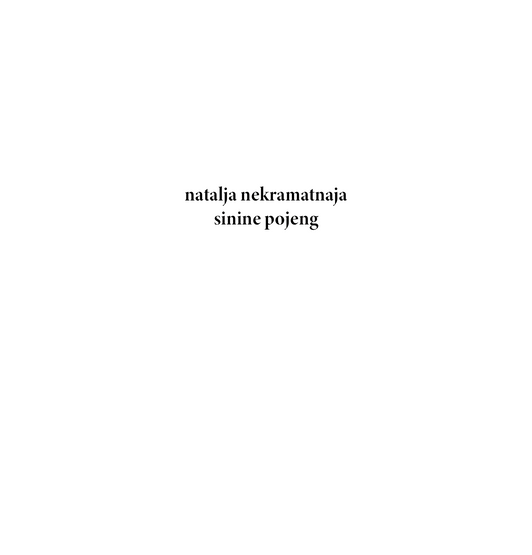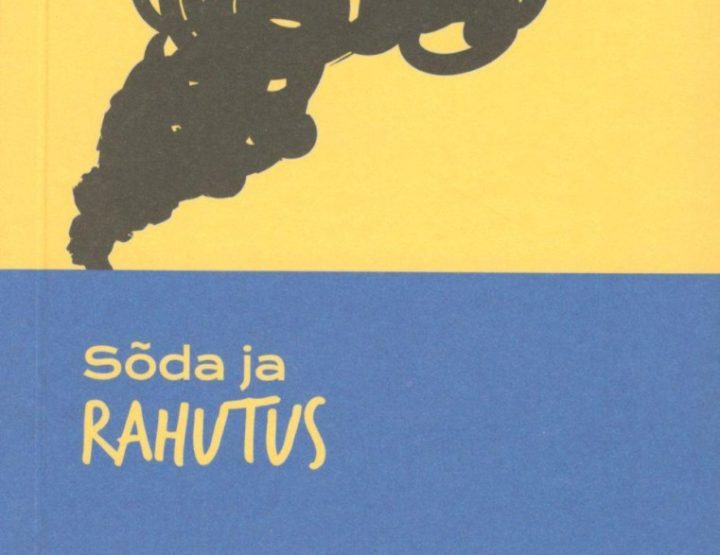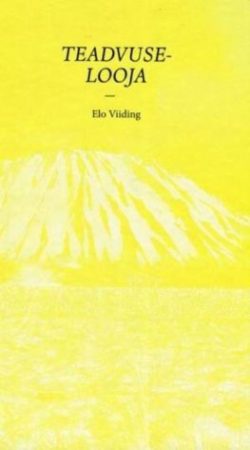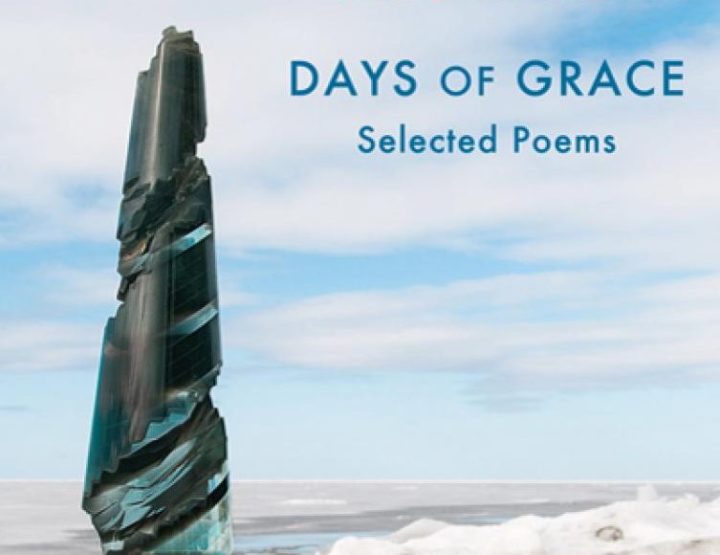1. The history and social background
Ethnofuturism is a term which was born like a joke because there was a need for innovations in literature and art in liberated Estonia, but now it is a serious thing. The social background of ethnofuturism was connected with the national liberation movement in Estonia in the late 1980s. As Piret Viires writes, the term ethnofuturism was born spontaneously among a small group of young writers and artists in Tartu in the late 1980s at the time of liberation in Estonia. The birth of the term was connected with two literary organisations: the “Hirohall”, which was a little group (only five members: Karl Martin Sinijärv, who was the direct inventor of the term, Sven Kivisildnik, Kauksi Ülle, Valeria Ränik and Jüri Ehlvest) of young writers active from 1988 to 1991 in Tartu, and the second group was the Estonian Kostabi-$ociety. The spirit of the revolutionary period affected all the group members at that time. Spiritual inspiration was provided by Estonian-American artist Kalev Mark Kostabi, who represented the completed unity of money and art: he tried to destroy the myth of the poor artist, affirming that the artist, as well as the poet, can also be rich.
The Estonian Kostabi-$ociety and the group “Hirohall” defined the term ethnofuturism broadly: “…ethnofuturism is a joining of the archaic, prehistorical, ethnic substance peculiar to our nation with the modern, sometimes even futuristic form. Or the other way round – the archaic form (e.g. runo-song) with a contemporary vision of the world. Ethnofuturism can also be related to surrealism, but it is more nationalistic in its manifestos, strongly stressing national diversities. No doubt one of the reasons for the rise of ethnofuturism was an elevated interest in the history of the nation, its folklore (especially folk songs and ancient beliefs) and everything else that stresses the diversity of the nation”.
‘At the same time ethnofuturism has become a term used to mark a special worldview and creative method even outside Estonia. The term has spread among young Finno-Ugric writers and artists. Both Kauksi Ülle, a poet from South Estonia and the mother of the ethnofuturism movement, and Kari Sallama from the University of Oulu, connect the term’s two roots: ethnos and future. The first root strives for the national and the second strives for the future. National here means ancient Finno-Ugric culture, which exists in our national memory; it is our essence, not borrowed from the German culture. The future here means that we want to take all ancient culture into the future and it is not defined in the same way as the Italian or Russian literary movement of the 1910s.
I think the general model characterises not only Finno-Ugrian and other little nations, but also great nations. The balance between all three terms is very important and usually the great nations have achieved a balance: they don’t have many critical situations. If the balance is lost in a situation, one aspiration is activated. For example, in the Soviet period, little nations were endangered and the scales were tipped toward cosmofuturism and then ethnofuturism arose as a counterbalance. I think if an analogous situation happened, for example, in French, German or English culture, the reaction would be the same. The three aspirations exist not only in society but in literature too of course: literature represents the varying situations of society.
2. Ethnofuturism and literature
Therefore ethnofuturism is the modus vivendi for a nation in crisis and it may also be a method of literature or art. At the same time it requires a postmodern society, because ethnofuturism is an intellectual movement or struggle. Postmodernism arose in the 1960s or 1970s or even in the late 1950s. In my opinion Estonian ethnofuturism was born in 1958, in exile, with Kalju Lepik’s sixth collection, Kivimurd (The Quarry). Nobody knew that it was ethnofuturism, but Lepik began to use a new poetic mode and the political situation was as critical as it was at the end of the 1980s. Therefore ethnofuturism as a phenomenon is older than the term itself. The beginning of the postmodern age in European culture favoured, in turn, ethnofuturism in Estonian literature in exile, particularly in poetry: Estonian poetry played a great role in forming and preserving the Estonian national identity during the Soviet period and after.
With an imitative-structural allusion to Estonian alliterative verse, Kalju Lepik reveals what has been hidden in the collective unconscious of his people.
For example Kalju Lepik’s poem “Kivimurd” (“The Quarry”) is a poem with contemporary content in alliterative verse form, imitative of ancient verse; it is not original. Alliterative verse is the sign of ethnofuturism in that poem. At the same time, in the last three verses, irony, directed to the present age, culminates: “Uus aeg ussitas,/ vihavingu sussitas.// Tuli ja pussitas”. The last verses are in the style of later folk songs. The entire poem is a mixture of old and modern, or a mixture of different languages: the poet uses old words alongside modern ones. At the same time, an essential element of Lepik’s poetry is that it serves nationalism.
The same tendencies arose at the end of the 1980s when the term ethnofuturism was invented in the Estonian homeland. At the end of the 1980s the innovative period in our literature began. And as was true with the exile movement, the innovative period of Estonian literature began with innovations in poetry. First there was a period of punk poetry in 1986-1989, which brought to Estonian poetry the style of the spoken language, the low style and social protest connected with patriotism. And the “Hirohall” and Estonian Kostabi-$ociety in Tartu played a major role in 1989-1992.
In summary, we may say that innovation was discernible in three spheres of Estonian poetry in the 1990s: the language of poetry, the subject of poetry and its intertextuality. All of these spheres are connected to language, the primary subject of linguistic experiments. A uniform literary language dominated Estonian poetry during the Soviet period, but at the end of the 1980s and into the 1990s, various forms of slang, the dialect of South Estonia, fragments of foreign languages, forms of archaic Estonian language etc. surfaced. The commingling of various fragments of different languages is an essential aspect. In addition, increases in quotation and intertextuality have appeared in texts (Kalju Lepik’s poetry is rich in allusions and quotations too). Language, especially the language of poetry, was the main emphasis of the linguistic experiments: neologisms and new forms of poetry as well as the use of dialects and the form of runo-songs. The old forms and symbols are combined with the present time and at the same time the roles of authors or the subjects of poetry were important. This means that poets performed their own poems and appeared in certain roles: a peasant, a folk singer, a postman etc. And it was important that poets were active in the mass media too. On TV and radio, poetry took on the features of pop culture and it is clear that “The borders between literature and real life vanished. Game and reality become as one”.
It was the typical intertextual postmodern situation in our poetry, but in my opinion Estonian postmodernism did not play dangerous power games of political and social subversion at the end of the 1980s nor in the 1990s, but stressed the aspect of play. Ethnofuturism served the future of the nation but in the form of parody and pastiche, because ethnofuturism does not strive for ethnopreterism or the past of the nation, nor does it strive for cosmofuturism or the cosmopolitan. At the same time it must not be total parody, because separate authors represent more than one of the aspirations: for example Kauksi Ülle inclined more toward ethnopreterism. She focused on folklore. Karl Martin Sinijärv, who inclined more toward cosmofuturism or cosmopolitan, exhibits the opposite tendency. In the poetry of each, one trend dominated, the ethnopreteristic or cosmofuturistic respectively. Together they provided a balance in the movement of ethnofuturism and in (postmodern) society as well.
One of the brilliant voices of ethnofuturism is a young poet writing under the pseudonym Contra. He is a peasant and postman, who lives in the country. He publishes his own books and appears in his own poems. Folklorists say that he is a modern folk singer. For example his collection of poems “Tarczan” (1998), in which an allusion to the Tarzan story contains an intertextual pattern, leads the reader from literature to the problems of social life in Estonia. Contra uses both folklore and popular songs in his poetry. His work does not fit into the previous tradition of Estonian poetry, in which artistic poetry and folklore are strictly separated from each other. Contra’s Tarczan poems are an imitation of Estonian alliterative verse and contain an allusion to the Estonian epic poem “Kalevipoeg”. Tarzan and Tarzan’s son are not in opposition, but rather parallel each other. Tarzan is a wild man as is our national hero Kalevipoeg (Kalev’s son).
Contra lowers both mythic figures and demonstrates that we need a new paragon: neither mass cultural and cosmopolitan Tarzan nor old national Kalevipoeg is suitable. In our time we need a different kind of identity that does not represent the wild man, the wild life nor brutal power. Contra’s poems demonstrate clearly that ethnofuturism creates verses which are neither national nor international, nor cosmopolitan – this is the soft opposition between national and international in ethnofuturism, and at the same time the bridge between national and international in Estonian poetry. It is a bridge which is directed toward the future, and demonstrates that Estonians do not live only in the present.
At the beginning of the 1990s, poetry dominated Estonian literature. It leaned toward the local or national. Although at the end of the 1990s and at the beginning of the 2000s, language experiments continue, as in Estonian prose, cosmopolitan tendencies arise more and more often in Estonian poetry. The picture is variegated at the beginning of the new millennium. Some poets declare that they are ethnofuturists or, as they have restyled themselves, ethnopunk poets. The Tartu group NAK (Olavi Ruitlane, Aapo Ilves, Veiko Märka, Jaan Pehk, Contra, Wimberg) come immediately to mind. But the symbols employed in ethnofuturism, while generally connected to cosmopolitan tendencies, deploy over a wide spectrum.
At the end of the 1990s, technical aspects in literature, in connection with computers and web pages, and different technical possibilities for publishing and creative work gained prominence. I think that Estonian poetry inclines more toward the cosmopolitan or cosmofuturism or to the international. The aspects of future and international are more stressed than the aspects of national or the aspect of ethno. For example, one interesting project was Mart Väljataga’s “Sada tuhat miljardit millenniumi sonetti” (“One hundred thousand billion sonnets for the millennium”) (2000). Mart Väljataga borrowed that idea from Raymond Queneau, who was a French experimenter and had his ribbon book published in 1960. There are ten finished Shakespearean sonnets in Väljataga’s book; to get one hundred thousand billion sonnets, a reader must combine the new sonnets with ribbons or verses, which may be cut from the second half of the book. In the book there are fourteen verses or ribbons.
Mart Väljataga’s experiment was more linguistic. The next example demonstrates that visual effects became prominent in last year’s Estonian poetry. And once more international or cosmopolitan aspects or aspirations to the cosmopolitan were stressed. Our young poet and semiotician Valdur Mikita’s new collection Rännak impampluule riiki (A Journey to the State of Impamp-Poetry) (2001) connects linguistic experiments with pictorial play. Impamp translates as jumping –jack. It is naive play that stresses the aspects of the future and the international, when verbal poetry will be less popular and it will be simpler to look at pictures. Of course in this book the play is once again connected with irony: the titles of Mikita’s poems include “The Poetry of Licking”, “The Poetry of Rubbing”, “The Poetry of Smelling”. He also uses syllabic and sound effects; his poetry is similar to dada poetry from the beginning of the 20th century.
In my opinion the irony and play with foreign words, trademarks and other international symbols serves nationalism covertly, because the ironic aspect deconstructs the symbols of the cosmopolitan.
I have given only a few examples, but it is clear that Estonian poetry is moving towards the international or cosmopolitan and searching for opportunities to become as broad as Estonian prose. International symbols occur more frequently, but postmodern or ethnofuturistic irony balances the inclination toward the cosmopolitan. The movement of ethnofuturism played a major role in the innovation of Estonian poetry and helped to raise the profile of postmodern play and tolerance. At the same time it propagated the optimistic idea that a little nation has a future. The domination of international symbols and prose in literature demonstrated that the crises are over. National symbols primarily stress play and the search for new possibilities. Our identity is pulverized, differentiated and open: as in postmodern play, identity is in continuous flux, because irony and pastiche deconstruct and exclude stasis.
© ELM no 15, autumn 2002




